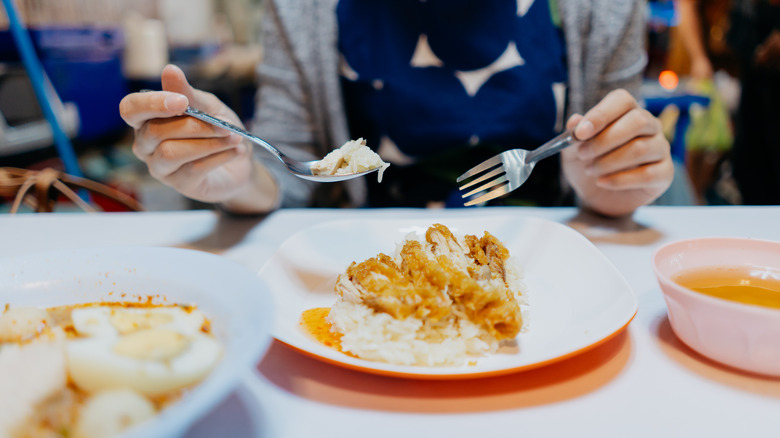When it comes to combining bold flavors and ingredients, there’s no doubt that Thailand reigns supreme. An absolute food lover’s paradise in Southeast Asia, Thai food is all about spice, freshness, and aromatic herbs — all loaded up onto a flavor-packed plate. Whether you’re chowing down on some pad Thai during a night market run, testing out your spice levels with a serving of papaya salad, or simply enjoying the comfort of a classic Thai green curry, your taste buds will embark on an adventure of their own during your visit.
However, there’s one particular thing about Thai dining that typically leaves foreigners scratching their heads: Where are all the knives? Sit down at most traditional Thai eateries, and you’ll find a collection of spoons, forks, and chopsticks placed somewhere nearby for your convenience. But knives? Well, those are pretty much nonexistent. The reason for this is that, according to locals, a spoon and fork combo is simply the most efficient way to get food into your mouth. Plus, since most Thai foods are already cut into small, bite-size pieces, it makes sense that you wouldn’t need a knife to keep cutting them up.
How to use your spoon and fork while eating in Thailand

Considering that you probably won’t find knives pretty much anywhere in Thailand while eating out — except for maybe a farang (aka, foreigner) restaurant — you’ll need to get acquainted with how locals use the utensils. For starters, there’s how to hold them. Typically, you’ll want to hold the spoon in your right hand, and the fork in your left hand. From there, all you need to do is use your spoon like you’d normally use a fork — and, in some cases, a knife — and your fork like you’d normally use a knife.
Don’t worry: It sounds a lot more confusing than it actually is. For example, if you think something on your plate is too large to eat in one bite, use the edge of your spoon to cut it down and then scoop it up. Boom — spoon like a knife! Meanwhile, if you’re having trouble gathering everything on your spoon, you can use your fork to push it on. Boom — fork like a knife! Whatever you do, make sure to always eat with the spoon and keep the fork away from your mouth.
And what about chopsticks? While showing off your skills might sound tempting, it’s worth noting that most Thai dishes are typically eaten with the spoon and fork combo — not a pair of chopsticks. However, if you’re planning on ordering some sort of noodle soup, feel free to ask your waiter for a pair.
Other Thai table manners to keep in mind

A bucket list destination that most travelers agree everyone should visit at least once in their life, Thailand feels like a world of its own. So while you’re busy soaking up the culture — why not embrace the local table etiquette as well and make the most of your food tourism experience?
Forks and spoons aside, locals have plenty of other standards when it comes to dining. For starters, there’s the whole ordeal with rice. On most occasions, you’ll be given your own little bowl of rice to enjoy at dinner. Served with pretty much everything, sticky rice is also one of the few things that Thais agree is okay to eat with your bare hand. Just make sure you’re using your right hand — the left hand is considered “dirty” in Thai culture and should be kept away from food.
Then, there’s the question of how to behave while sharing a meal with locals and foreigners alike. Thais take dining in someone else’s company very seriously. Some cultural eating etiquettes include waiting for the oldest or wealthiest person at the table to start eating, eating slowly, keeping your portion sizes to a minimum (you’re more than welcome to reach in for seconds and thirds), and spending a lot of time socializing. Whatever you do, though, don’t try and talk with your mouth full. Either finish your bite or cover up if you’re eager to join the conversation. Otherwise, your tablemates might think of you as uneducated and rude.

